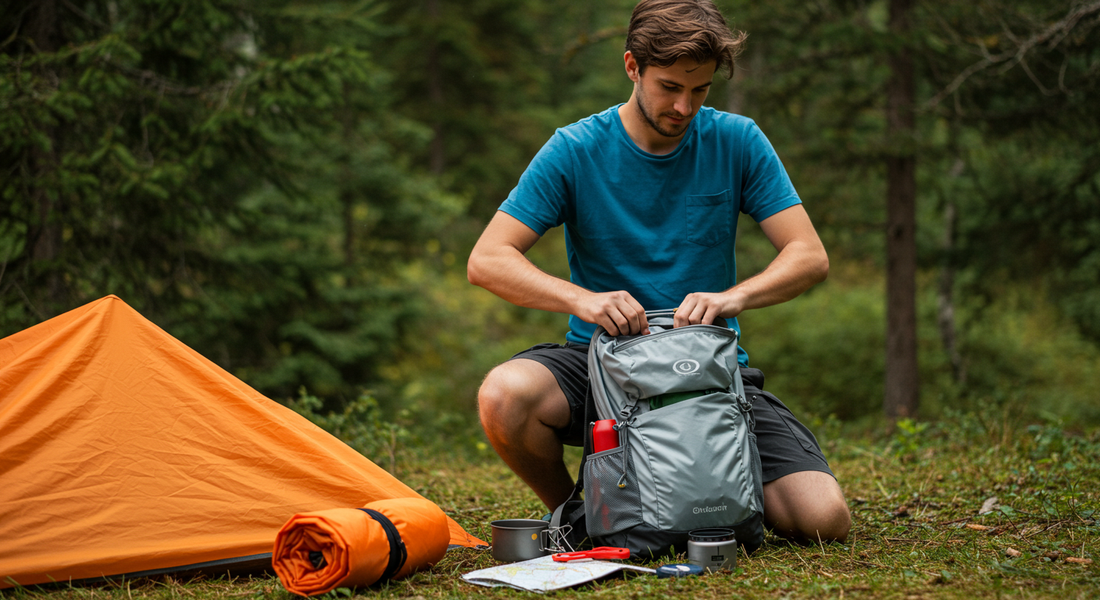
Smart Packing for Camping Trips: How to Travel Light Without Sacrificing Comfort
Share
Introduction
Packing for a camping trip can be overwhelming, especially when balancing the need for comfort with the reality of limited space. Overpacking makes your backpack heavy, while underpacking leaves you unprepared for the outdoors. The key lies in smart packing—choosing lightweight, multi-purpose gear that maximizes functionality while minimizing bulk.
At Packstead, we specialize in gear that’s designed for portability, durability, and convenience. Here’s a complete guide to packing smart for your next camping trip.
1. Start with a Packing List
Before anything goes into your bag, create a camping checklist. Break it into categories: shelter, sleep, cooking, clothing, and safety. Having a list prevents last-minute panic and reduces the chance of forgetting essentials like a first-aid kit or flashlight.
2. Choose Lightweight Shelter
Your tent is one of the bulkiest items, so choosing wisely matters. Opt for a lightweight, waterproof tent designed for quick setup. If you’re backpacking, a compact two-person tent is easier to carry, while car campers may enjoy the space of a pop-up tent. Always pack a ground tarp for added protection without much added weight.
3. Streamline Sleeping Gear
A good night’s sleep is essential, but your sleeping system doesn’t need to be bulky. Pack:
- A lightweight sleeping bag rated for your season.
- An inflatable sleeping pad for insulation and comfort.
- A compact camping pillow or stuff sack filled with clothes for head support.
This combination saves space while ensuring rest.
4. Compact Cooking Essentials
Cooking in the wild is easier with smart choices:
- A portable camping stove and fuel canister.
- Lightweight cookware—a pot, pan, and multi-use utensils.
- Collapsible bowls and mugs to reduce volume.
- Biodegradable soap and a sponge for cleanup.
A small spice kit or instant coffee packets can elevate your meals without taking up much space.
5. Clothing: Layer, Don’t Overpack
Instead of packing many outfits, focus on a layering system:
- Base layer: Moisture-wicking shirts and leggings.
- Mid layer: Fleece or insulated jacket.
- Outer layer: Waterproof shell.
Bring versatile pieces that can be mixed and matched, and avoid cotton which holds moisture. Pack only what you’ll truly need for the trip’s duration.
6. Organize with Packing Cubes and Dry Bags
Keeping your backpack organized makes life easier at camp. Packing cubes help separate clothing, while dry bags protect essentials like electronics and matches from moisture. Color-coding these bags makes items easy to find in low light.
7. Essential Safety and Survival Gear
No smart packing list is complete without safety tools:
- A multi-tool for repairs and meal prep.
- First-aid kit for emergencies.
- Water filtration system to stay hydrated.
- Headlamp or lantern for visibility at night.
At Packstead, we recommend carrying compact survival gear that’s reliable but doesn’t add unnecessary bulk.
8. Tips for Maximizing Space
- Roll clothes instead of folding to save space.
- Store small items inside cookware or shoes.
- Attach bulky items like sleeping pads outside the pack.
- Keep frequently used items (snacks, map, flashlight) in easy-access pockets.
Conclusion
Smart packing is all about efficiency—bringing what you need, leaving behind what you don’t, and ensuring every item serves a purpose. With a streamlined checklist and compact gear, you’ll enjoy more freedom and comfort on your trip.
At Packstead, we curate camping gear that’s designed for portability and practicality, so you can spend less time worrying about packing and more time enjoying the outdoors.
